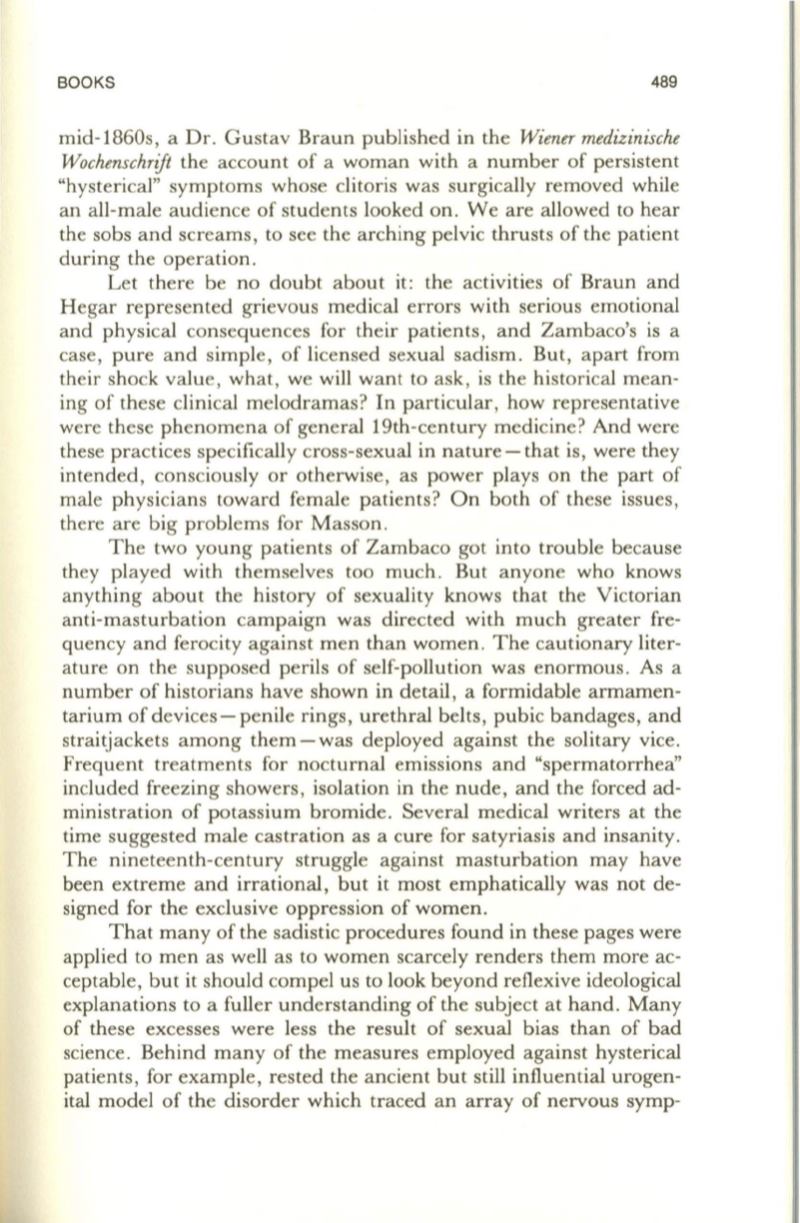
BOOKS
489
mid-1860s , a Dr. Gustav Braun published in the
Wiener medizinische
Wochenschrifl
the account of a woman with a number of persistent
"hysterical" symptoms whose clitoris was surgically removed while
an all-male audience of students looked on . We are allowed to hear
the sobs and screams , to see the arching pelvic thrusts of the patient
during the operation .
Let there be no doubt about it: the activities of Braun and
Hegar represented grievous medical errors with serious emotional
and physical consequences for their patients , and Zambaco's is a
case, pure and simple, of licensed sexual sadism. But, apart from
their shock value , what , we will want to ask, is the historical mean–
ing of these clinical melodramas? In particular, how representative
were these phenomena of general 19th-century medicine? And were
these practices specifically cross-sexual in nature - that is, were they
intended, consciously or otherwise, as power plays on the part of
male physicians toward female patients? On both of these issues,
there are big problems for Masson .
The two young patients of Zambaco got into trouble because
they played with themselves too much . But anyone who knows
anything about the history of sexuality knows that the Victorian
anti-masturbation campaign was directed with much greater fre–
quency and ferocity against men than women. The cautionary liter–
ature on the supposed perils of self-pollution was enormous. As a
number of historians have shown in detail, a formidable armamen–
tarium of devices - penile rings, urethral belts, pubic bandages, and
straitjackets among them - was deployed against the solitary vice.
Frequent treatments for nocturnal emissions and "spermatorrhea"
included freezing showers , isolation in the nude, and the forced ad–
ministration of potassium bromide. Several medical writers at the
time suggested male castration as a cure for satyriasis and insanity.
The nineteenth-century struggle against masturbation may have
been extreme and irrational, but it most emphatically was not de–
signed for the exclusive oppression of women.
That many of the sadistic procedures found in these pages were
applied to men as well as to women scarcely renders them more ac–
ceptable, but it should compel us to look beyond reflexive ideological
explanations to a fuller understanding of the subject at hand. Many
of these excesses were less the result of sexual bias than of bad
science . Behind many of the measures employed against hysterical
patients, for example, rested the ancient but still influential urogen–
ital model of the disorder which traced an array of nervous symp-


